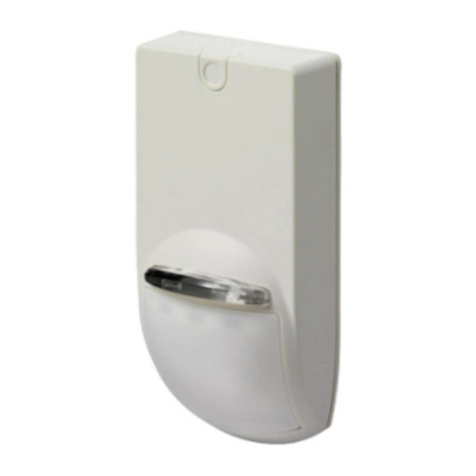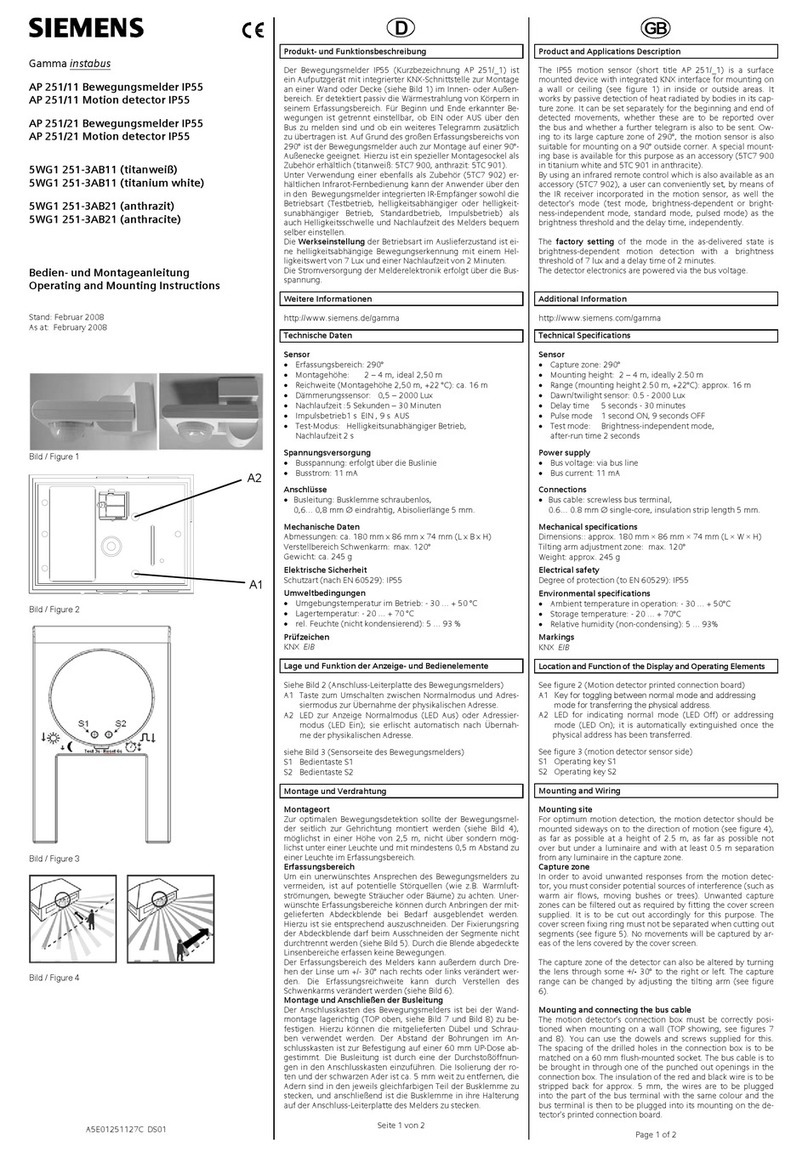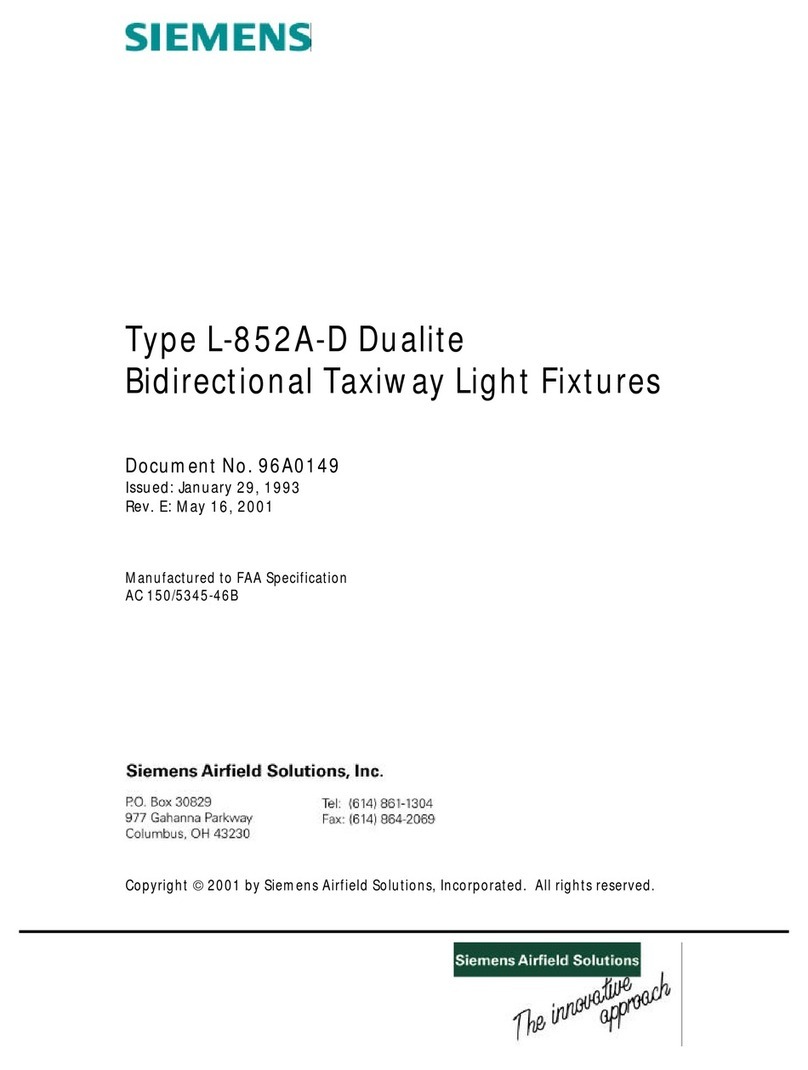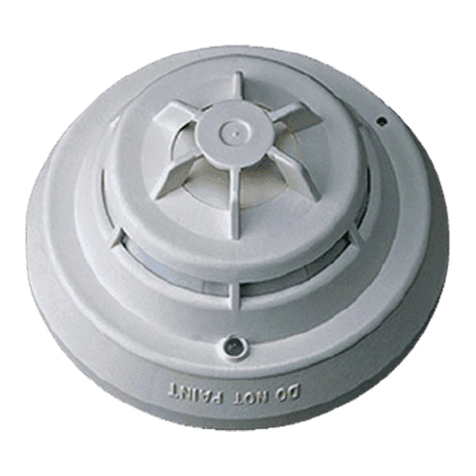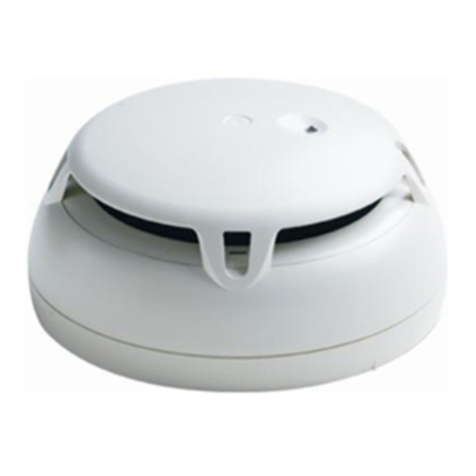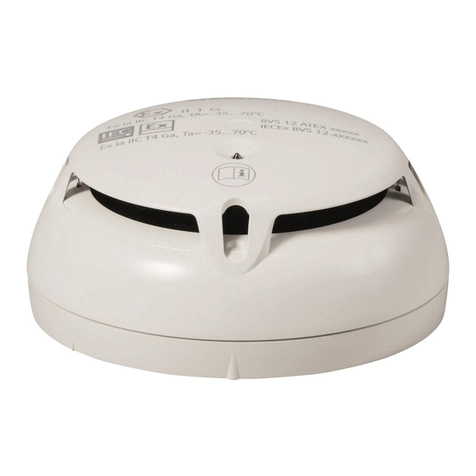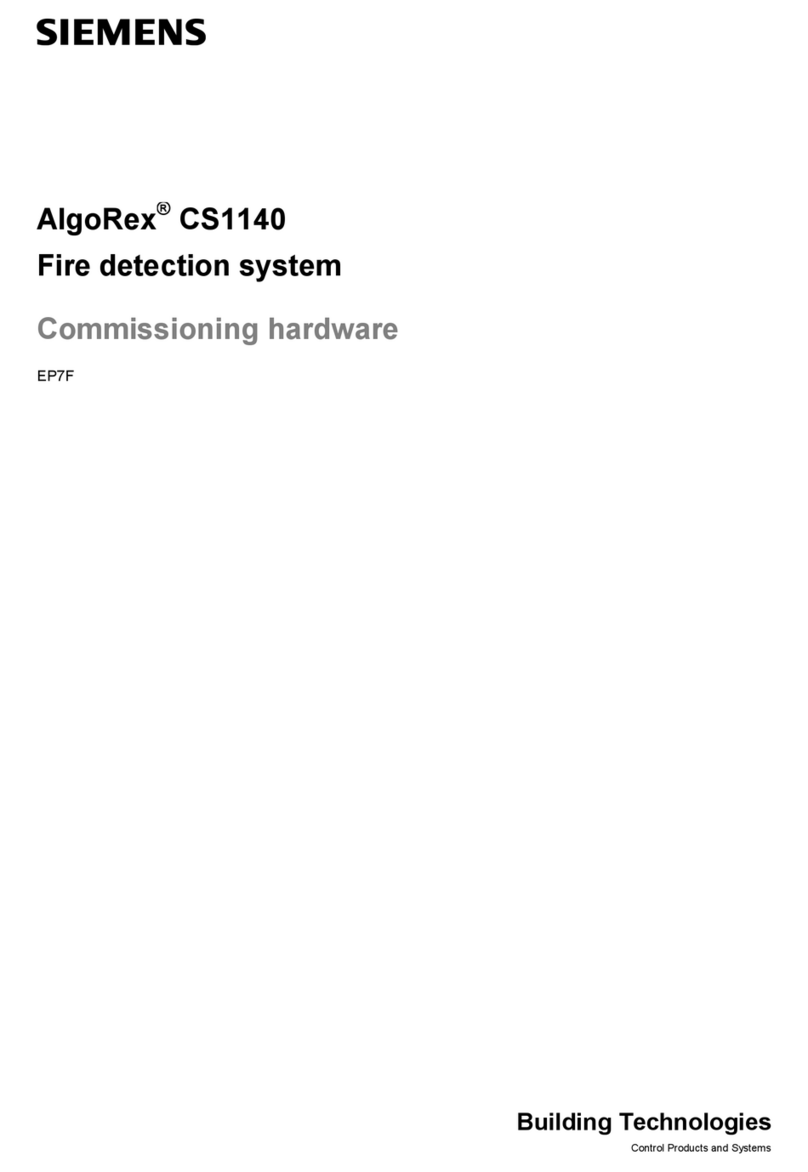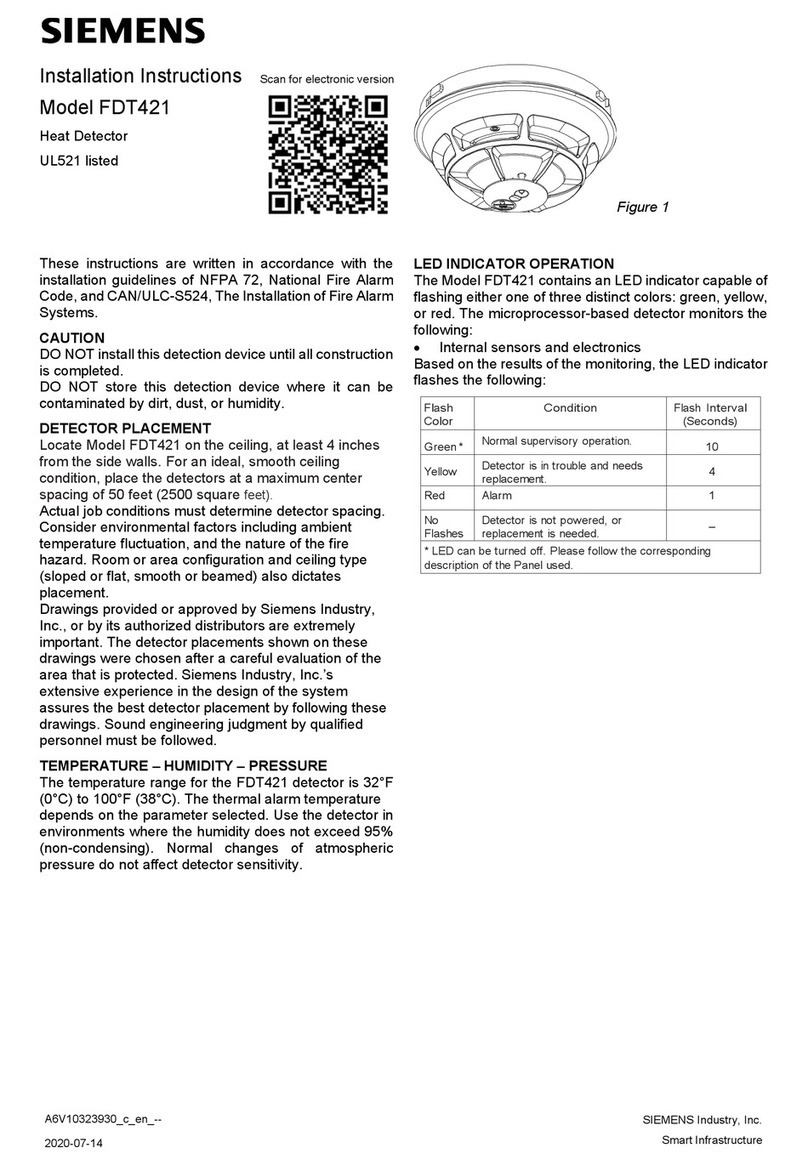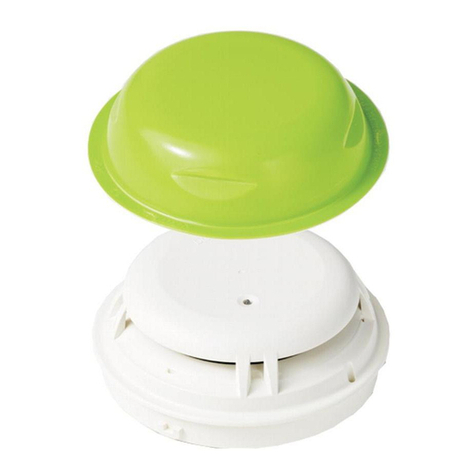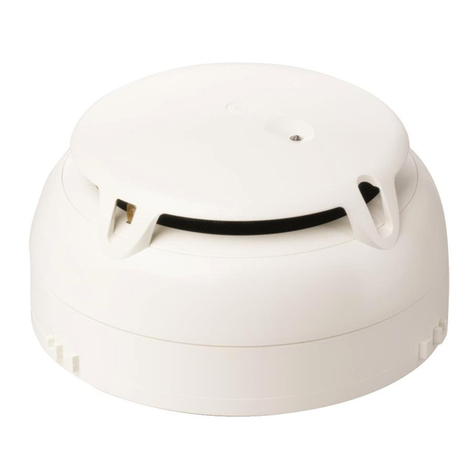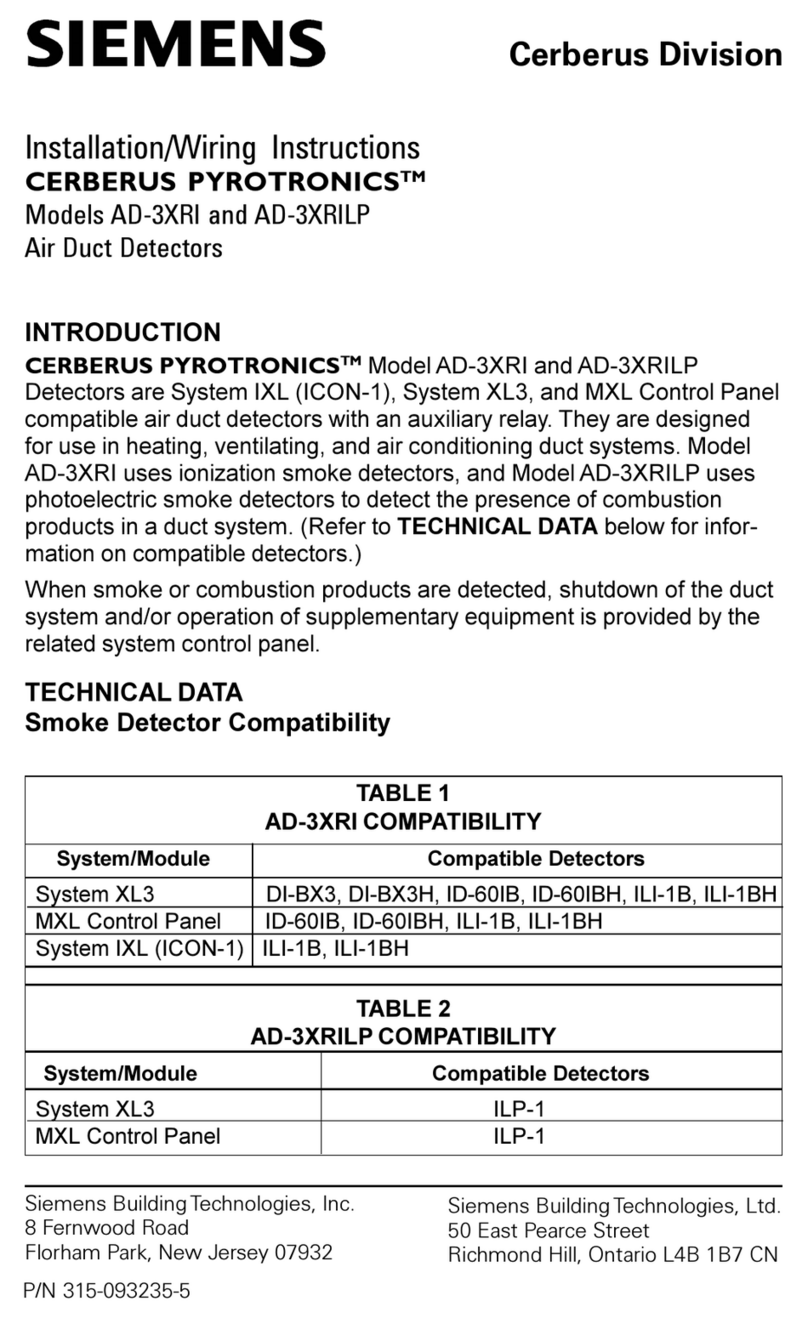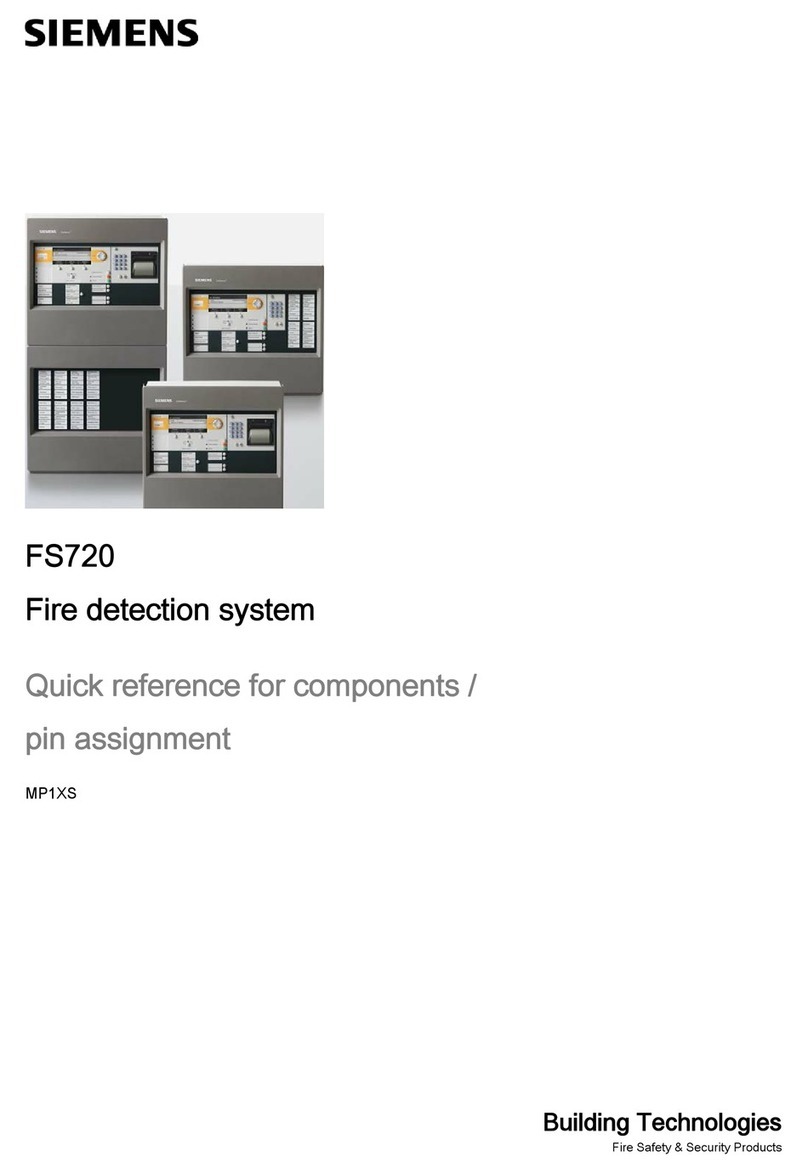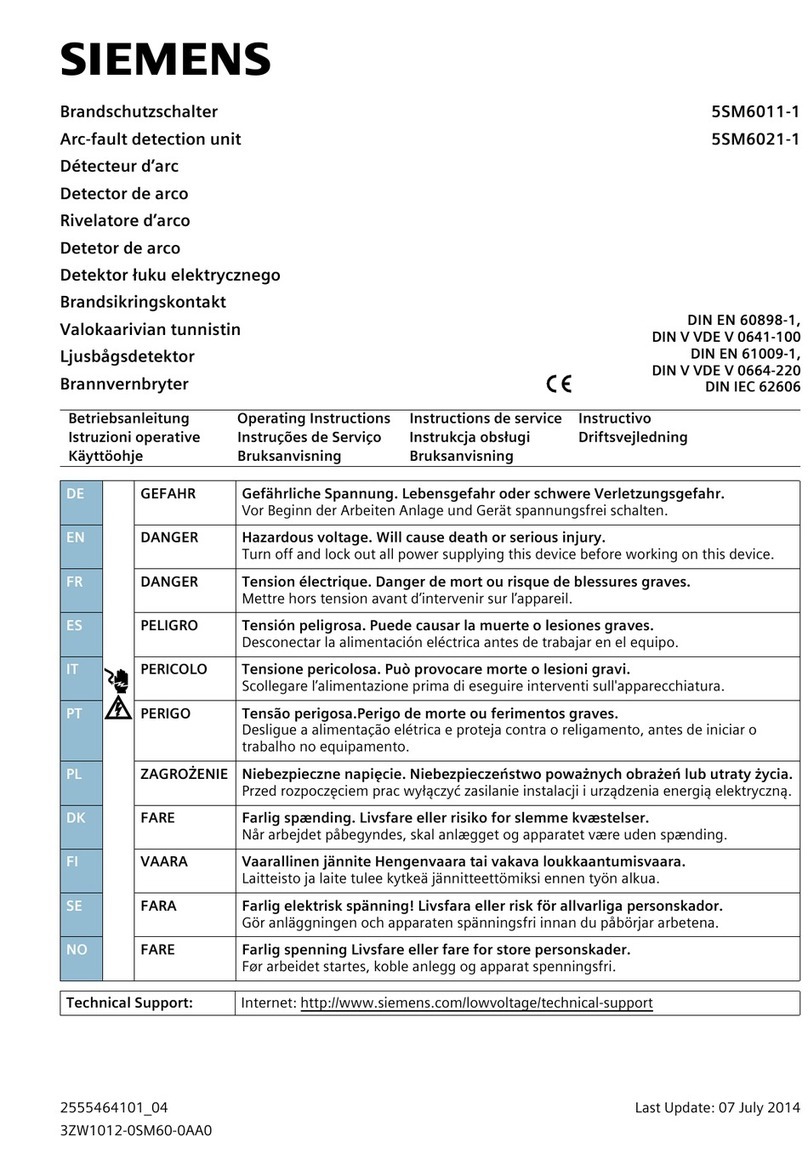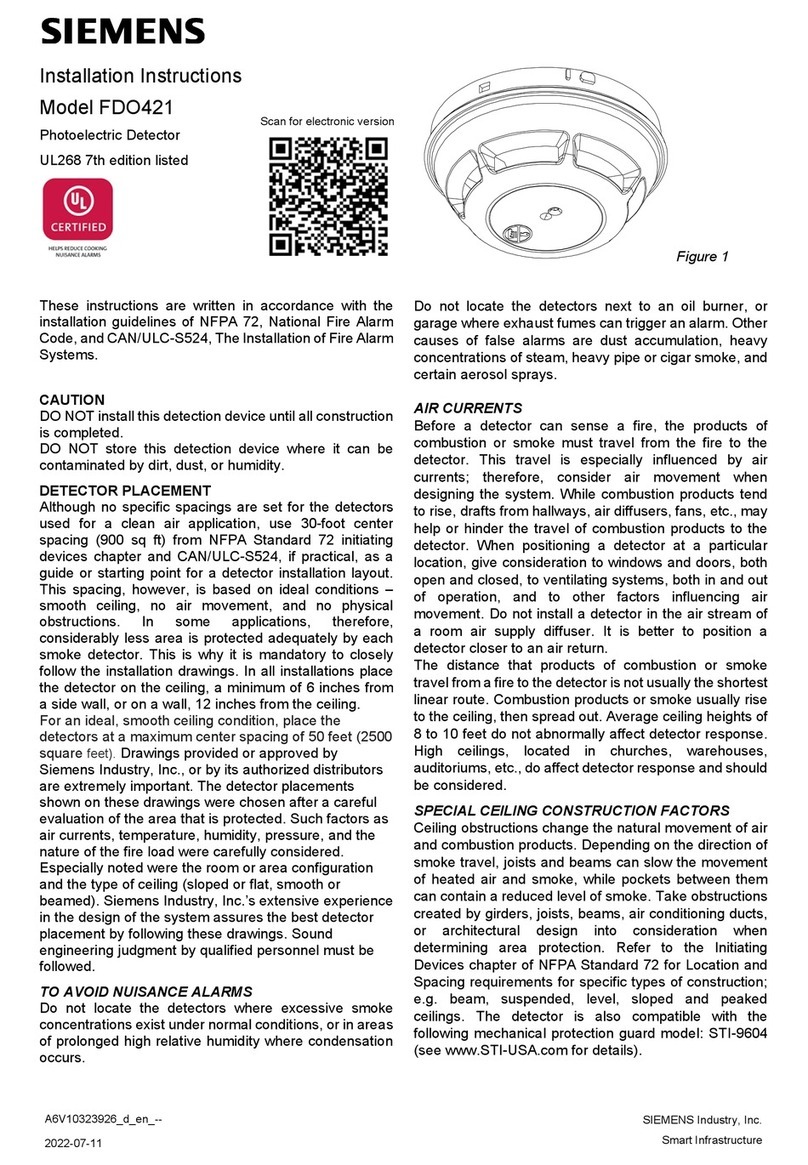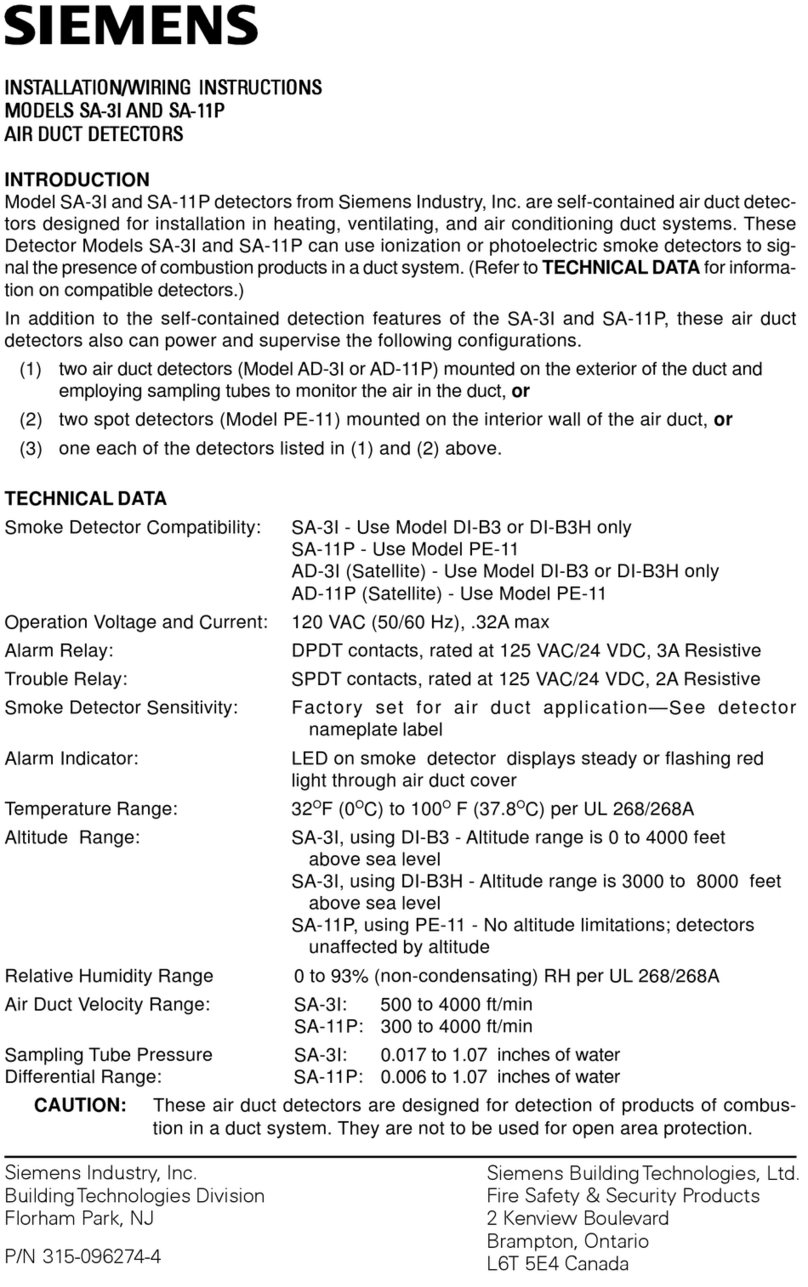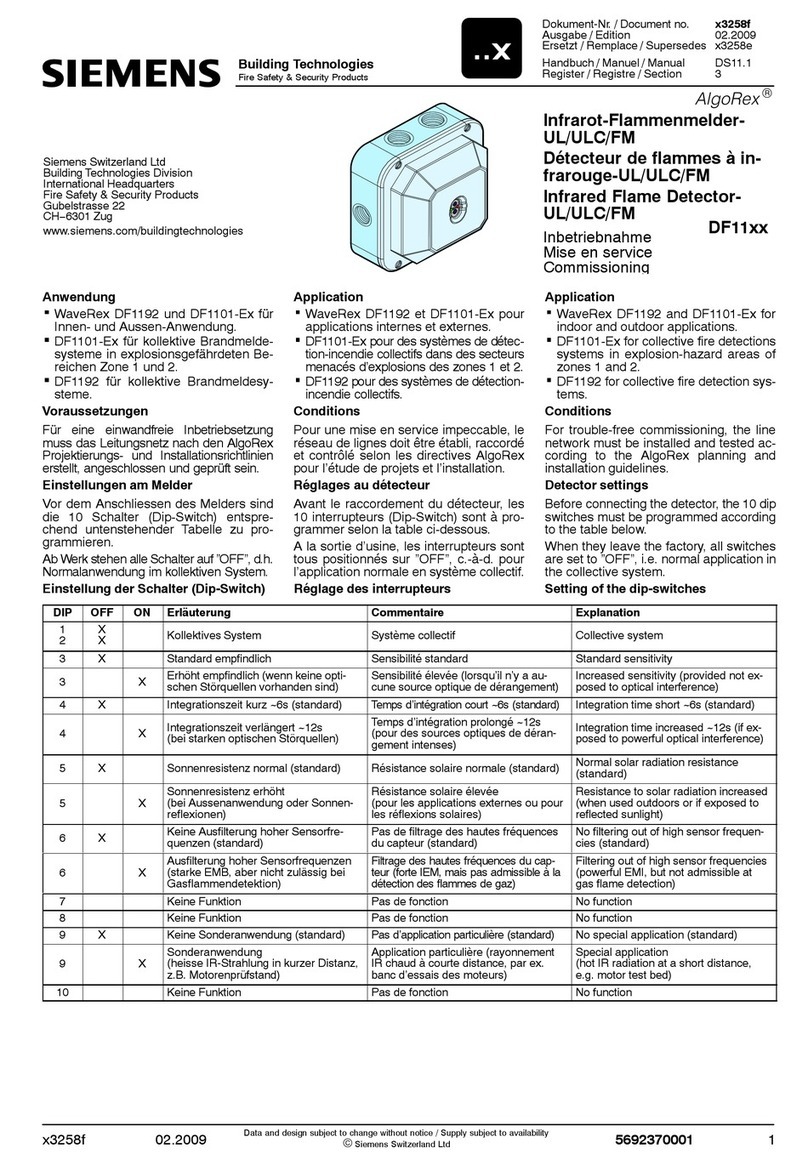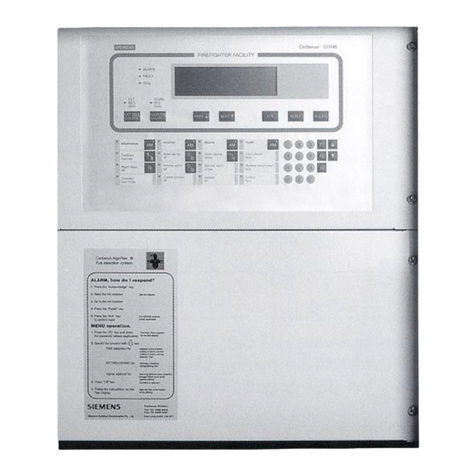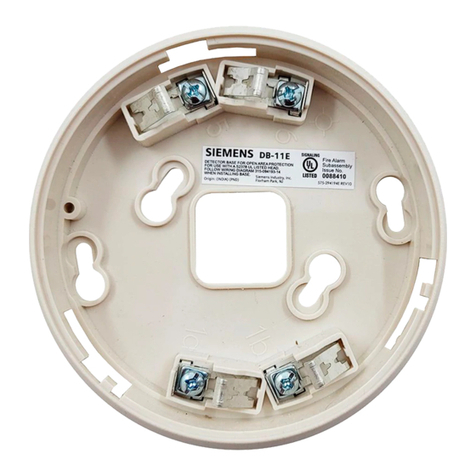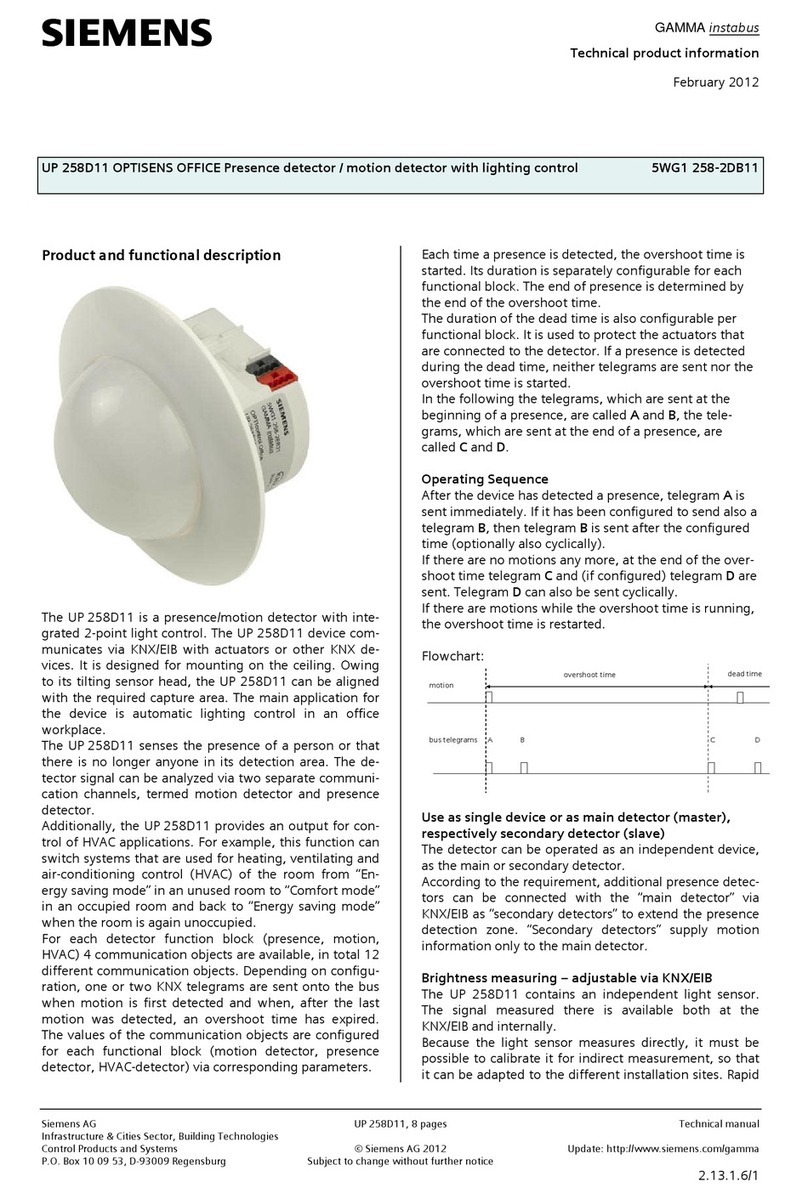
2
OPERATION
When the SA-3I or SA-11P is in operation, a sample of air is drawn from the duct and passed
through the sampling chamber at low velocity by means of the inlet sampling tube. The air
sample passes through the smoke detector mounted in the duct housing and is exhausted back
into the duct via the outlet sampling tube.
Standby Indication
uring normal operation the green Power LE on the power supply control board, located in the
wiring compartment of the SA-3I/-11P, is lit, indicating that AC power is being applied. The alarm
and trouble relays are in non-alarm and non-trouble states during standby operation.
Alarm Indication
Each smoke detector used with the SA-3I/-11P includes an LE for visual alarm indication. If
the air duct detector is not visible, a remote alarm lamp can be used for visual alarm indica-
tion. (See Figure 6 for models.)
Alarm Operation
An alarm signal from the smoke detector within the SA-3I/-11P or from a satellite detector
causes the alarm relay in the SA-3I/-11P to energize.
The Model SA-3I/-11P can be wired for direct alarm relay control of normally energized and de-energized
devices. Refer to ELECTRICAL WIRIN for details. When all products of combustion are cleared from
the duct system, the Model SA-3I/-11P can be reset by operating the RESET switch with the Reset key.
WARNIN : Air duct detectors SA-3I/-11P cannot be used for releasing service.
Trouble Condition
A trouble condition in the SA-3I/-11P or in a satellite unit due to a loss of detector supervision
causes the trouble relay in the SA-3I/-11P to de-energize. Loss of AC power to the SA-3I/-11P
results in the green Power LE turning off and the trouble relay de-energizing.
MOUNTIN THE AIR DUCT HOUSIN
Location on Duct System
The air duct detector should be located in the main supply duct, downstream from the filters
and positioned so as to operate reliably in case of smoke in any part of the air stream. In
instances where the filters are capable of removing smoke, a detector should be installed both
upstream and downstream from the filters.
The air duct detectors, because they use sampling tubes which monitor the full width of an air
duct, overcome the limitations of spot-type smoke and heat detectors in the duct. However, since
stratification can occur in the air stream after a long duct run, it is desirable to locate the detector
after bends or inlets which create turbulence, and hence, a more homogeneous mixture of air. The
detector should, when possible, be located a minimum of six duct-widths downstream from the
source of turbulence (see Figure 1). A 12 inch by 12 inch access hole should be cut in the duct
adjacent to the detector to permit checking and cleaning the sampling tubes.
The air duct detector should be located in the air handling
system, as shown in Figure 2, and should be in conform-
ance with NFPA Pamphlet No. 90A, Air Conditioning and
Ventilating Systems and with NFPA 72 National Fire
Alarm Code. (Both publications are available from the
National Fire Protection Association, Batterymarch Park,
Quincy, Massachusetts.) The detector on the return air
side of the blower should be located at a point prior to
exhausting air from the building or diluting return air with
outside air. The detector on the supply air side of the
blower should be downstream of the blower.
The detectors should be wired into the system so that
they automatically shut down the blowers and operate
dampers as required.
Mounting the Air Duct Housing (See Figure 3)
a. Affix the adhesive backed gaskets (Item 1) to the back of the detector housing (2) so that the
larger hole on the gasket lines up with the sampling tube hole on the sampling chamber
and the smaller hole with the housing mounting hole.
Figure 1
Typical Mounting of Duct
OUTLET
SAMPLING TUBE
INLET
SAMPLING TUBE
AT LEAST
SIX DUCT
WIDTHS
